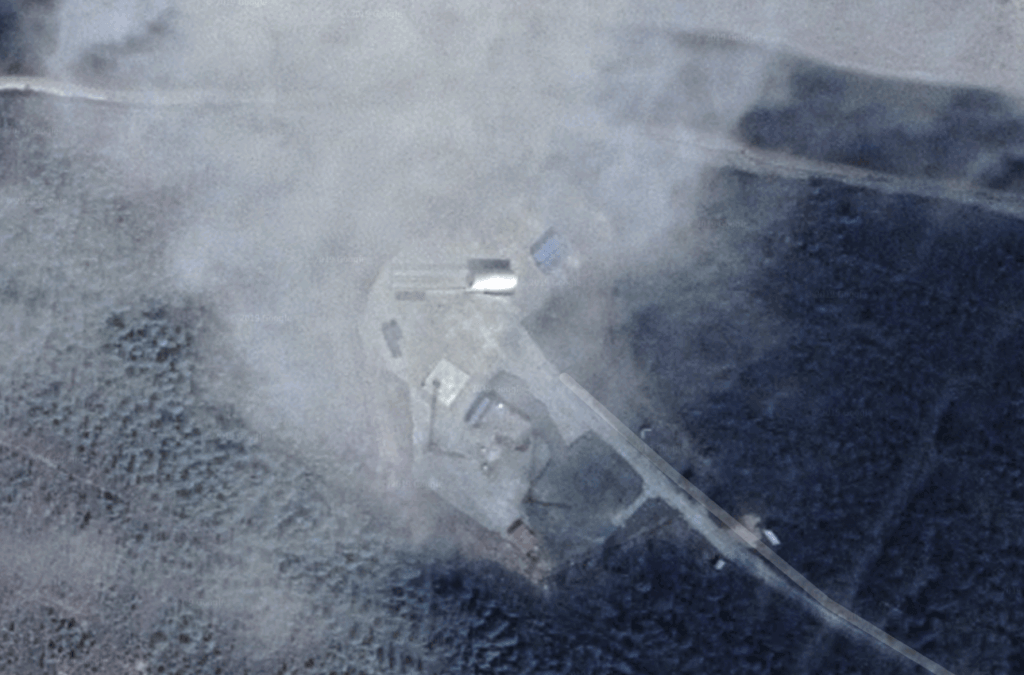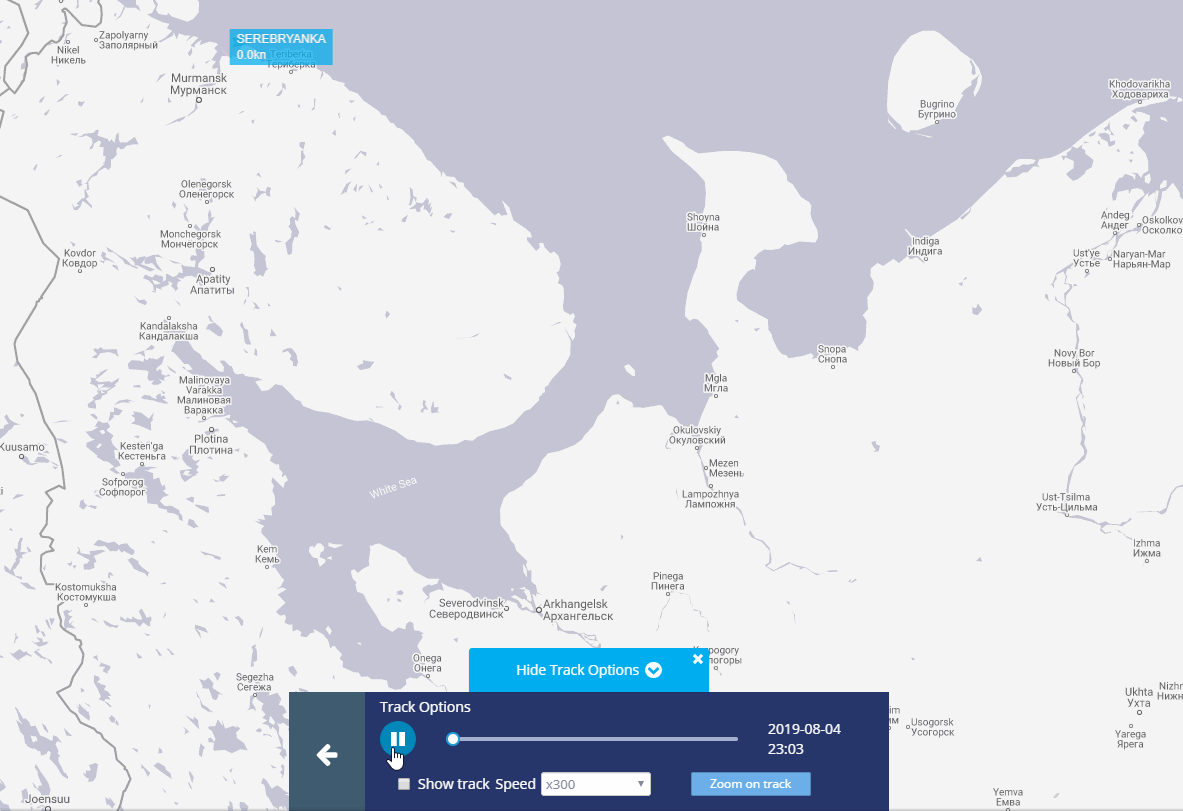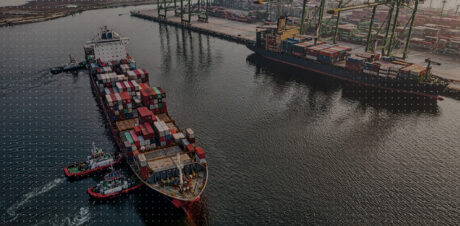Last weekend, Russia’s state-owned nuclear energy company announced the deaths of five employees killed in an August 8 explosion. The explosion occurred at a naval testing site near the village of Nyonoksa, in the country’s Arkhangelsk region. Early reports indicate the explosion is related to a test of a Russian nuclear missile.
“As a result of an accident at a military training ground in the Arkhangelsk region, five employees of the State Atomic Energy Corporation Rosatom were killed while testing a liquid propulsion system,” Rosatom, the nuclear energy company, said in the statement.
The statement went on to specify that the liquid propulsion system contained “isotopic power sources.”
The presence of these employees has bolstered suspicions that the incident occurred during a test of a nuclear-powered cruise missile. Online observers were quick to note in the immediate aftermath of the incident the presence of a Rosatom nuclear fuel transport ship, the Serebryanka, located within the exclusion zone established by the Russian Ministry of Defense.
A closer examination of the Serebryanka’s behavior around the launch reveals a typology of vessel activity around Russian missile tests. Monitoring the activity of certain vessels owned by Rosatom may make tracking these events easier in the future.

Fig. 1: The area believed by many to be the site of the suspected launch. The protective environment on rails is identical to one identified by the Center for Nonproliferation Studies at Russia’s Pankovo launch site. (Airbus, Google 2019, 64.651013, 39.173610)
A Russian Nuclear Cruise Missile with Indefinite Range
Russian President Vladimir Putin revealed the Russia’s new nuclear-powered missile, codenamed “Burevestnik” (NATO designation: SSC-X-9 Skyfall), in March 2018. In his announcement, the Russian president boasted that the missile was hypersonic with unlimited range, rendering NATO missile defenses useless.
The announcement was accompanied by footage of a November 2017 test launch from the Pankovo test site in northern Russia. U.S. analysts claim the missile traveled approximately 35 km during the test before crashing into the ocean.
In August 2018, the Russian government launched an effort to recover the test debris consisting of several vessels. Researchers at the Center for Nonproliferation Studies (CNS) found that one of these vessels was the Serebryanka.
The Active Role of the Serebryanka
Following last week’s explosion, the Russian Ministry of Defense established an exclusion zone around the area, closing the area to civilians for a month.

Fig. 2: A notification restricting travel through the exclusion zone until September 9.
Despite this, online observers noted the presence of multiple unidentified vessels within the exclusion zone. Of these vessels, only the Serebryanka activated its automatic identification system beacon. The automatic identification system, or AIS, is a digital system that tracks ship locations to increase maritime safety.
However the Serebryanka did not come in response to the explosion, but seems to have been present beforehand, according to AIS data published by MarineTraffic.
The Serebryanka departed its home port, Murmansk, on August 4. From Murmansk it headed to an area just off the coast of Nyonoksa, arriving near the suspected launch site on August 6. It remained anchored there for several days before returning to Murmansk on the evening of August 9.

ig. 3: The path of the Serebryanka from Murmansk to Nyonoksa (MarineTraffic).
This timeline suggests that the vessel played an active role in the missile test. Based on the CNS theory regarding the Serebryanka’s involvement in the 2018 cleanup off the coast of Novaya Zemlya, it seems likely that it was present this time to recover the missile after the test’s completion.
Rosatom’s Fleet
The Serebryanka belongs to the Russian state, but is managed by the state-owned company Atomflot—known colloquially as Rosatomflot—according to Equasis, which tracks ship ownership and management. Based in Murmansk, Rosatomflot is a state-owned enterprise founded by Rosatom and is responsible for managing the Rosatom fleet of 21 vessels.
While the fleet primarily comprises nuclear icebreakers, it also has three nuclear fuel transports—the Rossita, the Imandra, and the Serebryanka.
Tracking Future Missile Tests
The Russian government has yet to reveal the full scope of last week’s incident. This has prompted significant concern among both the local population and the international community.
The nature of these tests is differentiated from those of conventional weapons by the presence of Rosatom employees and vessels. Monitoring the movements of Rosatom’s nuclear fuel transport ships can help identify test sites before tests take place.
The Russian Ministry of Defense has shown a preference for over-water launches in the Arctic. With Rosatom’s fleet anchored in Murmansk it seems unlikely that this will change for future launches. By watching the fleet’s movements and taking into account detailed analysis of the test sites, the international community will know what to watch for going forward.
The public records data used to power this research is available through Sayari Search! If you’re curious how this data could drive insights for your team, please reach out here.



